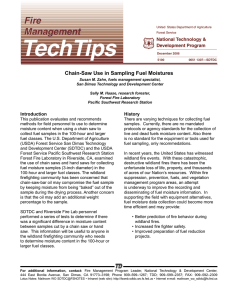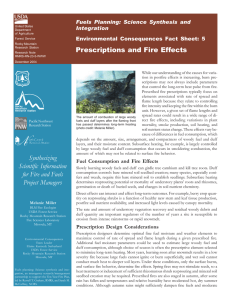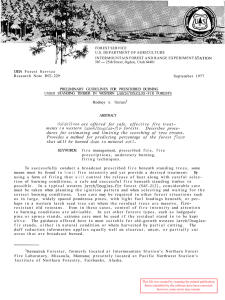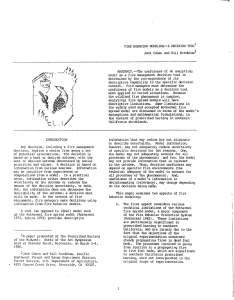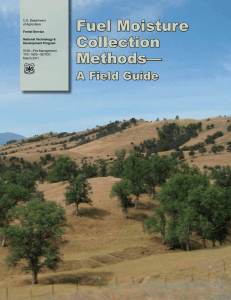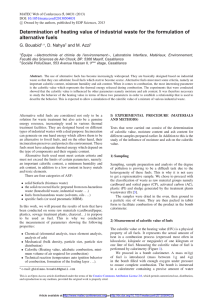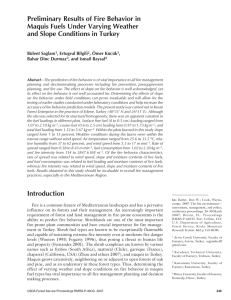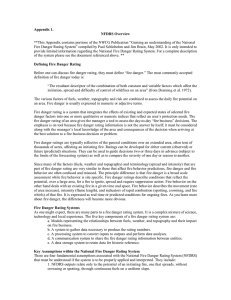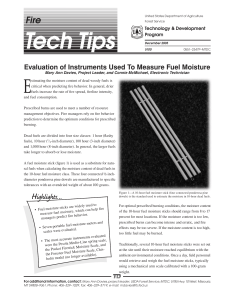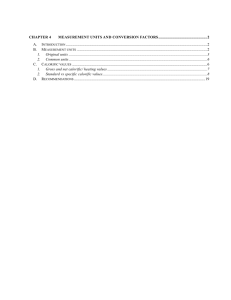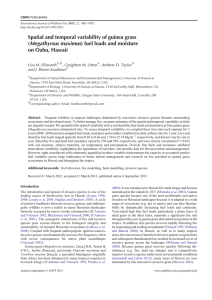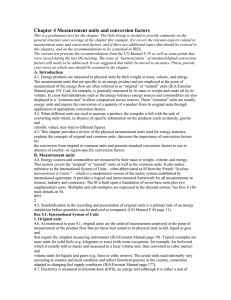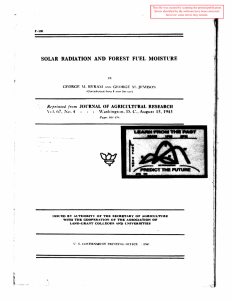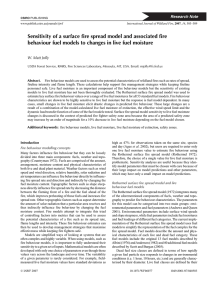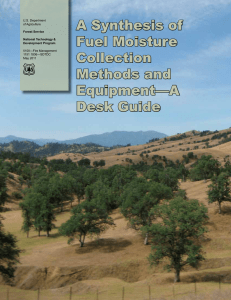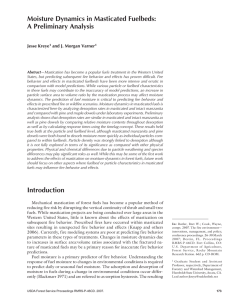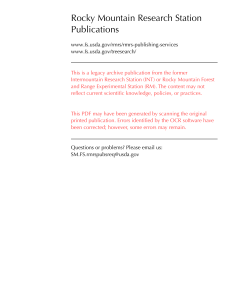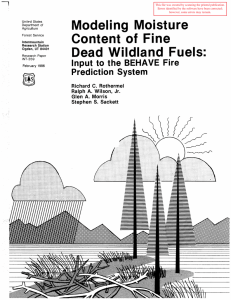Document 11860782
advertisement
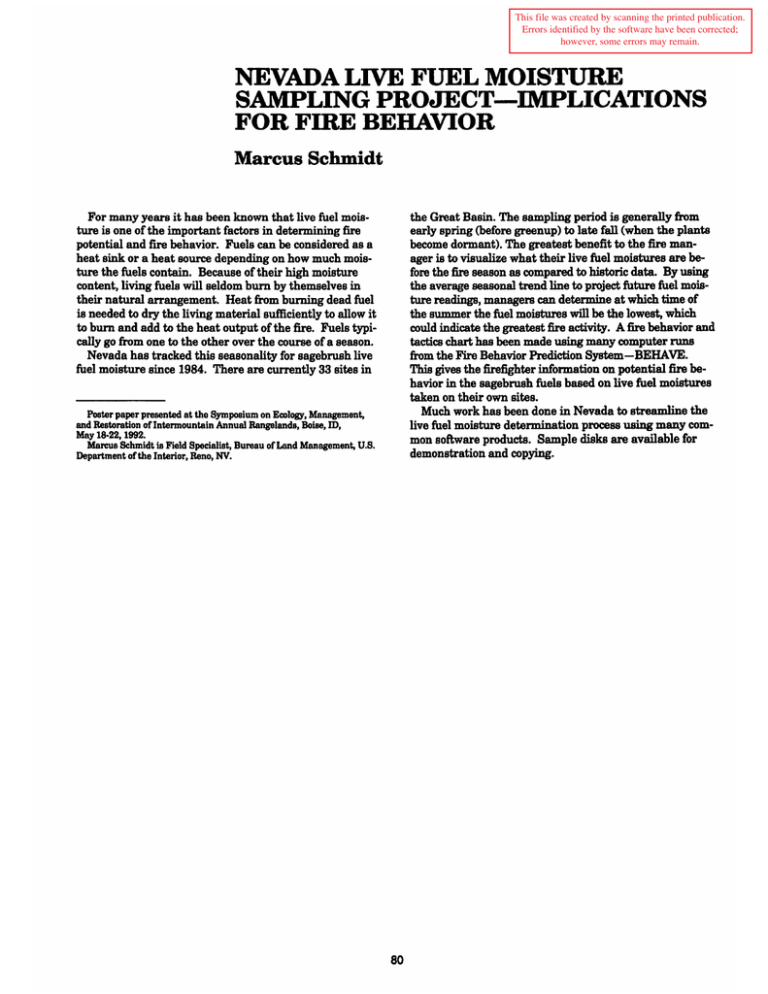
This file was created by scanning the printed publication. Errors identified by the software have been corrected; however, some errors may remain. NEVADA LIVE FUEL MOISTURE SAMPLING PROJECT-IMPLICATIONS FOR FffiE BEHAVIOR Marcus Schmidt the Great Basin. The sampling period is generally from early spring (before greenup) to late fall (when the plants become dormant). The greatest benefit to the fire manager is to visualize what their live fuel moistures are before the fire season as compared to historic data. By using the average seasonal trend line to project future fuel moisture readings, managers can determine at which time of the summer the fuel moistures will be the lowest, which could indicate the greatest fire activity. A fire behavior and tactics chart has been made using many computer runs from the Fire Behavior Prediction System-BEHAVE. This gives the firefighter information on potential fire behavior in the sagebrush fuels based on live fuel moistures taken on their own sites. Much work has been done in Nevada to streamline the live fuel moisture determination process using many common software products. Sample disks are available for demonstration and copying. For many years it has been known that live fuel moisture is one of the important factors in determining fire potential and fU"e behavior. Fuels can be considered as a heat sink or a heat source depending on how much moisture the fuels contain. Because of their high moisture content, living fuels will seldom burn by themselves in their natural arrangement. Heat from burning dead fuel is needed to dry the living material sufficiently to allow it to burn and add to the heat output of the fire. Fuels typically go from one to the other over the course of a season. Nevada has tracked this seasonality for sagebrush live fuel moisture since 1984. There are currently 33 sites in Poster paper presented at the Symposium on Ecology, Management, and Restoration of Intermountain Annual Rangelands, Boise, ID, May 18·22, 1992. Marcus Schmidt is Field Specialist, Bureau of Land Management, U.S. Department of the Interior, Reno, NV. 80




